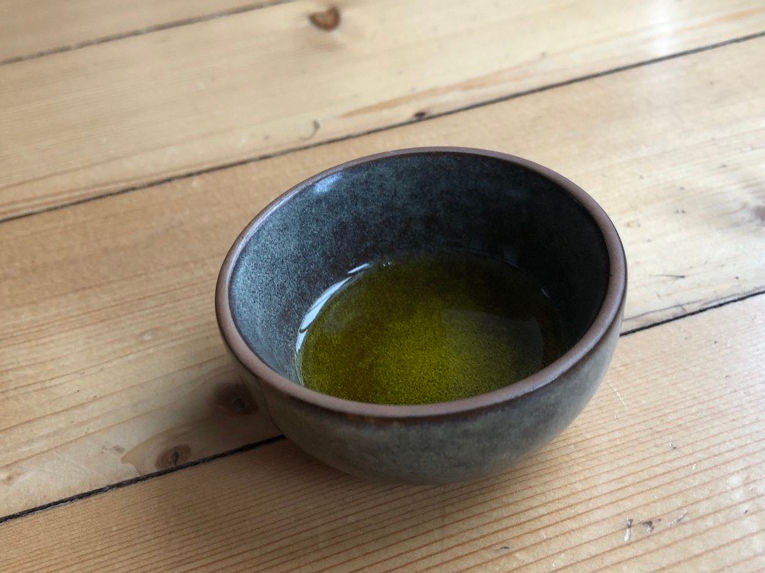Why stored linseed oil tastes bitter
What you could do about it
A team of scientists led by the Leibniz Institute for Food Systems Biology at the Technical University of Munich, in cooperation with the Chair of Food Chemistry and Molecular Sensory Science at the Technical University of Munich, has now uncovered new molecular details relevant to the bitterness of stored linseed oil. The new findings should help to develop suitable technological processes or breeding strategies that preserve the good taste of the edible oil for longer.

Marion Schmid
Compared to other vegetable oils, linseed oil is particularly rich in vital omega-3 fatty acids and can therefore contribute to a healthy diet. Freshly pressed, it has a delicate, nutty flavor. However, depending on storage conditions, it relatively quickly develops an unpleasant bitter off-flavor, which works against consumer acceptance.
Oxidation products under suspicion
Earlier analyses had already led to the assumption that, in addition to oxidized fatty acids, ring-shaped peptides (cyclolinopeptides) contribute considerably to the bitter taste in the aged oil. The cyclolinopeptides consist of eight to nine amino acids and can be divided into six classes (1 to 6). Until now, however, it was unknown which of the 25 human bitter receptor types they stimulate.
In order to investigate this in more detail, the scientists first determined the concentrations of the various cyclolinopeptides in fresh linseed oil and eight-month-old linseed oil stored at room temperature using spectroscopic analysis methods. They also determined the respective content of the various oxidation products. Subsequently, Tatjana Lang and Maik Behrens of the Leibniz Institute investigated the effect of the isolated non-oxidized as well as oxidized peptides on the different bitter receptor types. For this purpose, they used a cellular test system established at the Leibniz Institute.
Only two human bitter receptor types respond
"As assumed, the proportion of oxidized peptides increased significantly due to storage," reports food chemist Oliver Frank from the Chair of Food Chemistry and Molecular Sensory Science. First author Tatjana Lang adds, "Surprisingly, however, only two of the 25 bitter receptor types reacted to the peptides - especially TAS2R14." According to the scientists, almost all of the peptides that were able to activate the receptors contained one or two oxidized methionine building blocks in their ring structure. Methionine is a sulfur-containing amino acid whose oxidation leads to methionine sulfoxide or methionine sulfone.
As the study shows, a methionine sulfoxide-containing class 4 cyclolinopeptide was mainly detectable in relevant amounts in the stored oil. At the same time, it strongly activated the receptor TAS2R14. "This oxidation product therefore seems to be dominantly responsible for the bitter off-flavor compared to others," says principle investigator Maik Behrens. "Consequently, it would be conceivable to optimize the flavor quality of stored linseed oil by removing or reducing the content of this peptide class in the oil through breeding or technical measures," he continues.
The genes that encode cyclolinopeptides in flax are known, the researchers said. Likewise, there are flax seed varieties such as "Flanders" that contain fewer class 4 cyclolinopeptides compared to other varieties and could potentially be used as the basis for new breeds.
Original publication
Most read news
Original publication
Lang, T., Frank, O., Lang, R., Hofmann, T., and Behrens, M. (2022). Activation Spectra of Human Bitter Taste Receptors Stimulated with Cyclolinopeptides Corresponding to Fresh and Aged Linseed Oil. J Agric Food Chem. 10.1021/acs.jafc.2c00976. https://pubs.acs.org/doi/abs/10.1021/acs.jafc.2c00976
Organizations
Other news from the department science

Get the food & beverage industry in your inbox
By submitting this form you agree that LUMITOS AG will send you the newsletter(s) selected above by email. Your data will not be passed on to third parties. Your data will be stored and processed in accordance with our data protection regulations. LUMITOS may contact you by email for the purpose of advertising or market and opinion surveys. You can revoke your consent at any time without giving reasons to LUMITOS AG, Ernst-Augustin-Str. 2, 12489 Berlin, Germany or by e-mail at revoke@lumitos.com with effect for the future. In addition, each email contains a link to unsubscribe from the corresponding newsletter.
























































